Review of Osteosarcoma and Current Management
- PMID: 27761754
- PMCID: PMC5127970
- DOI: 10.1007/s40744-016-0046-y
Review of Osteosarcoma and Current Management
Abstract
Osteosarcoma is the most common primary malignancy of bone in children and young adults. This tumor has a very heterogeneous genetic profile and lacks any consistent unifying event that leads to the pathogenesis of osteosarcoma. In this review, some of the important genetic events involved in osteosarcoma will be highlighted. Additionally, the clinical diagnosis of osteosarcoma will be discussed, as well as contemporary chemotherapeutic and surgical management of this tumor. Finally, the review will discuss some of the novel approaches to treating this disease.
Keywords: Limb preservation surgery; Osteosarcoma; Review; Targeted therapy.
Figures

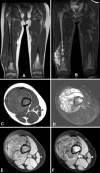
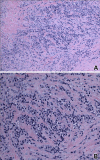
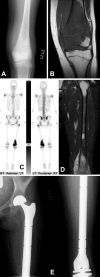
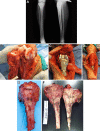

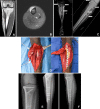
Similar articles
-
The molecular pathogenesis of osteosarcoma: a review.Sarcoma. 2011;2011:959248. doi: 10.1155/2011/959248. Epub 2011 Apr 13. Sarcoma. 2011. PMID: 21559216 Free PMC article.
-
Biology and therapeutic advances for pediatric osteosarcoma.Oncologist. 2004;9(4):422-41. doi: 10.1634/theoncologist.9-4-422. Oncologist. 2004. PMID: 15266096 Review.
-
MicroRNAs and Potential Targets in Osteosarcoma: Review.Front Pediatr. 2015 Aug 24;3:69. doi: 10.3389/fped.2015.00069. eCollection 2015. Front Pediatr. 2015. PMID: 26380245 Free PMC article. Review.
-
Malignant bone tumors in children: osteosarcoma.Hematol Oncol Clin North Am. 1987 Dec;1(4):655-65. Hematol Oncol Clin North Am. 1987. PMID: 3323177 Review.
-
Adjuvant chemotherapy for osteosarcoma.Semin Oncol. 1989 Aug;16(4):312-22. Semin Oncol. 1989. PMID: 2667146 Review.
Cited by
-
The efficacy of gemcitabine and docetaxel chemotherapy for the treatment of relapsed and refractory osteosarcoma: A systematic review and pre-clinical study.Cancer Med. 2024 Sep;13(18):e70248. doi: 10.1002/cam4.70248. Cancer Med. 2024. PMID: 39315544 Free PMC article.
-
Tumor-informed deep sequencing of ctDNA detects minimal residual disease and predicts relapse in osteosarcoma.EClinicalMedicine. 2024 Jun 20;73:102697. doi: 10.1016/j.eclinm.2024.102697. eCollection 2024 Jul. EClinicalMedicine. 2024. PMID: 39022798 Free PMC article.
-
Malignant distal femur tumors management in children, low cost innovations with affordable care in a tertiary care hospital, a cross sectional study.Ann Med Surg (Lond). 2019 Jul 10;44:83-86. doi: 10.1016/j.amsu.2019.07.012. eCollection 2019 Aug. Ann Med Surg (Lond). 2019. PMID: 31341617 Free PMC article.
-
Phase I and phase II clinical trials in sarcoma: Implications for drug discovery and development.Cancer Med. 2019 Feb;8(2):585-592. doi: 10.1002/cam4.1958. Epub 2019 Jan 10. Cancer Med. 2019. PMID: 30632291 Free PMC article. Review.
-
Targeting Akt/NF-κB/p53 Pathway and Apoptosis Inducing Potential of 1,2-Benzenedicarboxylic Acid, Bis (2-Methyl Propyl) Ester Isolated from Onosma bracteata Wall. against Human Osteosarcoma (MG-63) Cells.Molecules. 2022 May 28;27(11):3478. doi: 10.3390/molecules27113478. Molecules. 2022. PMID: 35684419 Free PMC article.
References
-
- Campanacci M. Bone and soft tissue tumors: clinical features, imaging, pathology and treatment. Berlin: Springer; 2013.
-
- Sissons HA. The WHO classification of bone tumors. Recent Res Cancer Res. 1976;54:104–108. - PubMed
-
- Damron TA, Ward WG, Stewart A. Osteosarcoma, chondrosarcoma, and Ewing’s sarcoma: National Cancer Data Base Report. Clin Orthop Relat Res. 2007;459:40–47. - PubMed
-
- Dorfman HD, Czerniak B. Bone cancers. Cancer. 1995;75(1 Suppl):203–210. - PubMed
-
- dos Santos Silva I, Swerdlow AJ. Sex differences in the risks of hormone-dependent cancers. Am J Epidemiol. 1993;138(1):10–28. - PubMed
Publication types
LinkOut - more resources
Full Text Sources
Other Literature Sources

